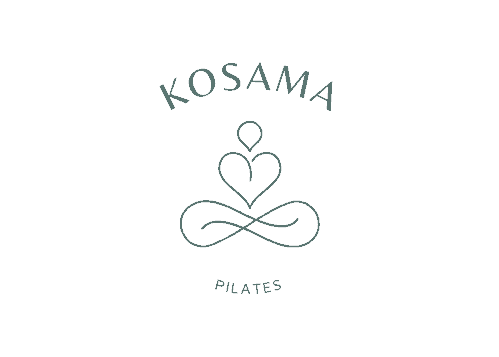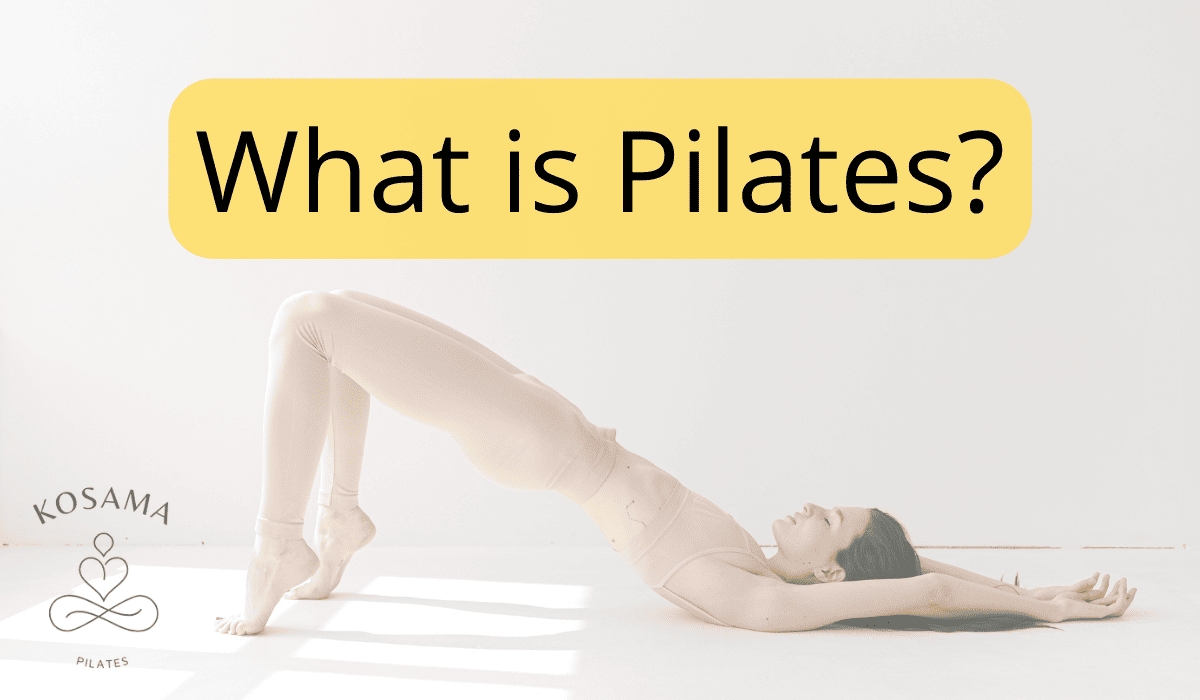There’s a sudden surge in Pilates’ popularity, and everyone is discussing its benefits. There are good reasons for it. Find out why.
The Pilates method has been around for almost 100 years.
But, recently, it has increased in popularity.
Let me take you through everything you need to know before you include the Pilates method in your workout routine.
Brief History of Pilates
Joseph Pilates invented the Pilates method in the 1920s. He referred to it as ‘Contrology.’
Joseph had a rough childhood, suffering from asthma, rickets, and rheumatic fever. Because of his tough childhood, he became invested in improving his health.
He closely studied various age-old disciplines like yoga, martial arts, and gymnastics. He combined it with his analytical approach to body mechanics, posture, and proper breathing. He also closely studied animal movements to determine what made them agile and strong.
Joseph grew up to become a professional boxer & self-defense instructor.
During World War I, he got to experiment with his exercises while working in a British camp. He devised a series. He named it ‘Contrology.’
Soon he designed equipment from hospital bed springs for rehabilitation exercises, and patients started going to him for physical therapy.
After the war, he migrated to the US and started his own Contrology studio. Dancers and athletes were his first set of clients and the first ones to realize the benefits of his exercises.
What Is Pilates
Pilates is a complete coordination of mind, body, and spirit. It comprises balanced, safe, and effective exercises to improve overall fitness.
There are controlled movements that safely challenge the body. Each exercise has a breathing pattern that activates your cardiovascular and respiratory systems.
The exercises increase blood and oxygen supply to the lungs. It focuses both on strength and flexibility by using body weight for resistance.
The basis of all Pilates exercises is core strengthening by working the deeper abdominal muscles and lower back muscles.
Joseph Pilates believed that having a strong core is directly related to good health.
‘Pilates develops not only the muscles of the body, suppleness of the limbs, and functioning of vital organs and endocrine glands; it also clarifies the mind and develops the will,’ says Frederick Rand Rogers (President, North American Physical Fitness Institute) in the book ‘Pilates’ Primer: The Millenium Edition (originally written by Joseph Pilates).
Who Is Pilates For?
Almost everyone. Yes, almost everyone, irrespective of age, gender, or health condition, can benefit from the Pilates method.
Whether your goal is to improve your everyday activities, fitness, or injury prevention, Pilates will help you with it. The workout can be customized as per your goal and health conditions.
It’s best to take your doctor’s approval if you’re facing any health issues.
Effectiveness of Pilates
Joseph Pilates designed his workout to give you ‘suppleness, natural grace and skill that will unmistakably be reflected in the way you walk, in the way you play, and the way you work.’
What separates Pilates from other workouts is that it is an effective combination of strengthening and stretching that can work well for almost anybody.
With proper practice, it can greatly improve health and fitness.
It develops the body uniformly, corrects the wrong posture, and strengthens the mind. With just 3 months of Pilates, you’ll notice positive body changes in the way you walk, work, or play.
Your muscles will develop uniformly and work in tandem with your core.
By reviving the many dormant muscle cells, Pilates also awakens the corresponding dormant brain cells. This, in turn, stimulates the functioning of the mind.
Pilates Principles
Over the years, different schools have developed the core guiding principles for Pilates. It’s important to grasp them if you want to practice Pilates.
- Centering
In Pilates, exercises are primarily based on the core. Every movement initiates from the core. A stable core is the foundation for all limb movements. Centering involves directing your attention toward your core and executing movements from that central point.
- Concentration
Paying attention to the body while following the Pilates method is important. It’s what forms the mind-body connection.
- Control
One must do every movement with control and promptly. This will ensure precision and safety. Control doesn’t mean that it has to be slow, but it just means you move mindfully.
- Precision
Every exercise has a specific alignment and form, which should be followed properly. The precision will help you gain results faster and achieve better body balance and posture.
- Breath
Breath is one of the most important parts of Pilates. Each exercise has a set pattern of inhalation from the nose and exhalation through the mouth. It energizes the body and mind. Breathwork also helps with body awareness.
- Flow of movement
Once you’ve mastered the exercises individually, you should then progress to moving from one exercise to another without stopping.
Similarities with Yoga
Many people compare Pilates with Yoga as the exercise and breathwork appear similar.
It is true to some extent as Joseph Pilates did take some inspiration from Yoga.
Let’s talk about the similarities first.
Both systems of exercise focus on breathwork to create a mind-body connection.
Some of the exercises in Pilates appear very similar to yoga asanas.
Both Pilates and yoga use movements that strengthen the core and improve strength, balance, flexibility, and posture.
The mind-body connection-both formats increase awareness of the body and breath to keep you strong and centered.
Difference between Pilates and Yoga
| Yoga | Pilates |
|---|---|
| Yoga has asanas– body postures with a longer hold time. | Pilates has exercises with repetitions and a continuous flow. |
| Pilates focuses on core strength and stability. | Yoga focuses more on stretching the core and spine to improve flexibility. |
| Yoga is a spiritual practice. | Pilates is a mind-body exercise, but there’s no spiritual angle. |
Why should you do Pilates?
Pilates is a full-body workout that works all muscles, especially the deeper ones that get left out in other exercises.
It builds and promotes functional strength that helps you lead an active, injury-free life.
Pilates will work great for you if you’re a beginner and looking for a gentle workout that is effective at the same time.
Benefits of Pilates
From getting physically fit to being mentally strong, Pilates has many benefits.
The first direct benefit is stronger abdominal muscles.
You’ll work on many deeper muscles, which usually get left out in other exercise methods.
Your posture and balance will improve, and you’ll notice that in your day-to-day activities.
If you face lethargy throughout the day, you’ll notice renewed energy levels.
There are many other benefits. Read more about it here.
Can you do Pilates if you have a health condition?
One of the original uses of Pilates was to rehabilitate injured patients during World War I.
Patients practicing Pilates saw faster recovery and developed stronger immunity.
When Joseph Pilates opened his first Pilates studio, he used the Pilates exercise to rehabilitate injured dancers and athletes.
Pilates is a gentle yet effective practice to include in your daily routine.
But you must consult your doctor before taking any form of exercise if you have any health condition.
Make sure to go for a certified Pilates instructor and tell them about your case so they can design a custom routine for you.
Mat Vs. Machine Pilates
You don’t need a Reformer or a Cadillac to see the benefits of Pilates.
Mat Pilates is equally beneficial.
Most essential Pilates exercises are either done on the back in a supine position or lying on your stomach in a prone position.
So, don’t hold yourself back if you can’t afford or don’t want to sign up immediately for a Pilates studio class.
There is a lot to accomplish before that, and it’s not necessary to do machine Pilates.
How to get started?
Check with your doc first if you have any existing health issues.
There are various ways you can start with your Pilates practice:
Find a Pilates studio or online classes.
Start with beginner’s lessons. Slowly progress up as you feel comfortable with the first set of exercises.
As the exercises put direct pressure on the abdomen, make sure to take clearance from your doctor if you’re suffering from any disease or postpartum.
Don’t worry about equipment; you can reap the same benefits if you follow mat Pilates regularly.
One can easily use smaller, less expensive equipment like toning circles, physio balls, and foam rollers at home.
FAQs
What kind of exercise is Pilates?
Pilates is a gentle, full-body workout that stretches and strengthens all muscles. It consists of exercises that work your core muscles and move your limbs while stabilizing the abdomen. It works on the deeper muscles and enhances overall health, balance, and posture.
What is Pilates, and what does it do?
Pilates is a workout program that conditions both the body and the mind. Joseph Pilates created this method after studying martial arts, yoga, gymnastics, dance, and weight training. The Pilates method promotes a perfect balance of strength & flexibility.
Is Yoga or Pilates better?
It depends on your goal and interests. Pilates is a safe and gentle workout for increasing strength and flexibility. It improves balance, posture, and overall health. Yoga focuses more on stretching and conditioning of internal organs for better health.
How is Pilates different from Yoga?
Pilates method strengthens all the muscles, unlike traditional yoga, which focuses more on flexibility. Pilates’ main objective is to strengthen and stabilize the core. It helps with posture correction, balance, and strength. Pilates exercises have continuous repetitions and flow into each other, unlike Yoga which has asanas (postures).
Is Pilates good or Gym?
If you want a gentler workout that stretches and strengthens your muscles, go for Pilates. You will get strong and lean muscles after Pilates compared to more buffed-up muscles while doing strength training in the gym. Pilates also works on the deeper muscles that get left out when gymming. Both have pros, and you must choose as per your goal and interests.

